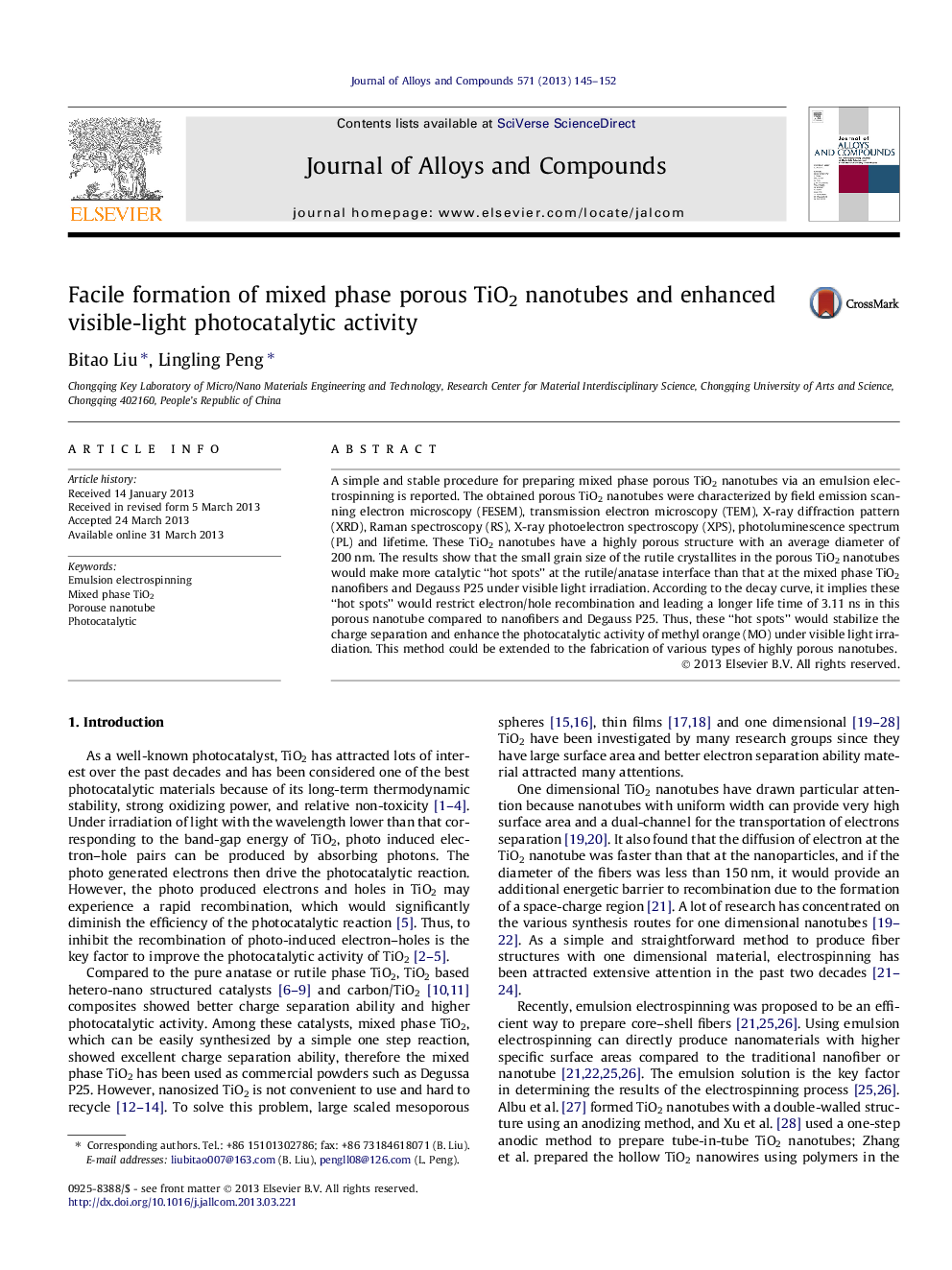| Article ID | Journal | Published Year | Pages | File Type |
|---|---|---|---|---|
| 1613877 | Journal of Alloys and Compounds | 2013 | 8 Pages |
Abstract
A simple and stable procedure for preparing mixed phase porous TiO2 nanotubes via an emulsion electrospinning is reported. The obtained porous TiO2 nanotubes were characterized by field emission scanning electron microscopy (FESEM), transmission electron microscopy (TEM), X-ray diffraction pattern (XRD), Raman spectroscopy (RS), X-ray photoelectron spectroscopy (XPS), photoluminescence spectrum (PL) and lifetime. These TiO2 nanotubes have a highly porous structure with an average diameter of 200Â nm. The results show that the small grain size of the rutile crystallites in the porous TiO2 nanotubes would make more catalytic “hot spots” at the rutile/anatase interface than that at the mixed phase TiO2 nanofibers and Degauss P25 under visible light irradiation. According to the decay curve, it implies these “hot spots” would restrict electron/hole recombination and leading a longer life time of 3.11Â ns in this porous nanotube compared to nanofibers and Degauss P25. Thus, these “hot spots” would stabilize the charge separation and enhance the photocatalytic activity of methyl orange (MO) under visible light irradiation. This method could be extended to the fabrication of various types of highly porous nanotubes.
Related Topics
Physical Sciences and Engineering
Materials Science
Metals and Alloys
Authors
Bitao Liu, Lingling Peng,
